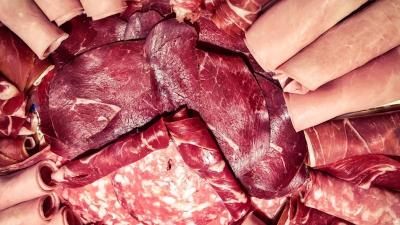Chicken Should Carry Feces Warning Label
Buy a chicken from any grocery store in America and you are likely to get more than you bargained for. Feces taint one in every two supermarket chickens, according to testing recently conducted by an independent laboratory at PCRM’s request.
The problem seems to be widespread. We collected chicken products from 15 different grocery store chains in 10 major U.S. cities. These were chickens marketed by Perdue, Pilgrim’s, and 22 other brands.
When the results came back, we discovered that 48 percent of the samples had tested positive for fecal contamination, as indicated by the presence of E. coli, a bacterium in chicken feces. The germs are used in USDA and industry testing as an indicator of fecal contamination.
How does fecal contamination make its way from chicken farms and slaughterhouses to the plastic-wrapped packages at your grocery store? It’s a dirty business.
A large chicken processing plant may slaughter more than 1 million birds a week. Chickens are stunned, killed, bled, and sent through scalding tanks. These tanks of water transfer feces from one dead bird to another.
After scalding, feathers and intestines are mechanically removed. Intestinal contents can spill onto machinery and contaminate the muscles and organs of that chicken and the birds that follow.
The carcasses are then rinsed with chlorinated water and—theoretically—checked for visible fecal matter. But slaughter lines process up to 140 birds per minute, and federal food safety inspectors are allowed little time to examine each carcass.
That could soon change—for the worse. The U.S. Department of Agriculture may begin to allow chicken plants to conduct their own inspections and speed up lines to 200 birds per minute. That will make it even harder for inspectors to detect contamination.
After this cursory inspection, chickens are packaged and shipped to stores. Americans eat an average of more than 83 pounds of chicken a year—and most have no idea that the supermarket chicken on their dining room table has a one in two chance of being contaminated with fecal matter.
Who cares, the chicken industry says. If the feces are adequately cooked, any germs they harbor will be killed. But feces may contain round worms, hair worms, tape worms, along leftover bits of whatever insects or larvae the chickens have eaten, not to mention the usual fecal components of digestive juices and various chemicals that the chicken was in the process of excreting.
Given the widespread nature of this disgusting problem, consumers deserve fair notice. It’s time for every package of supermarket chicken to carry a sticker that says, “Warning: May Contain Feces.”








